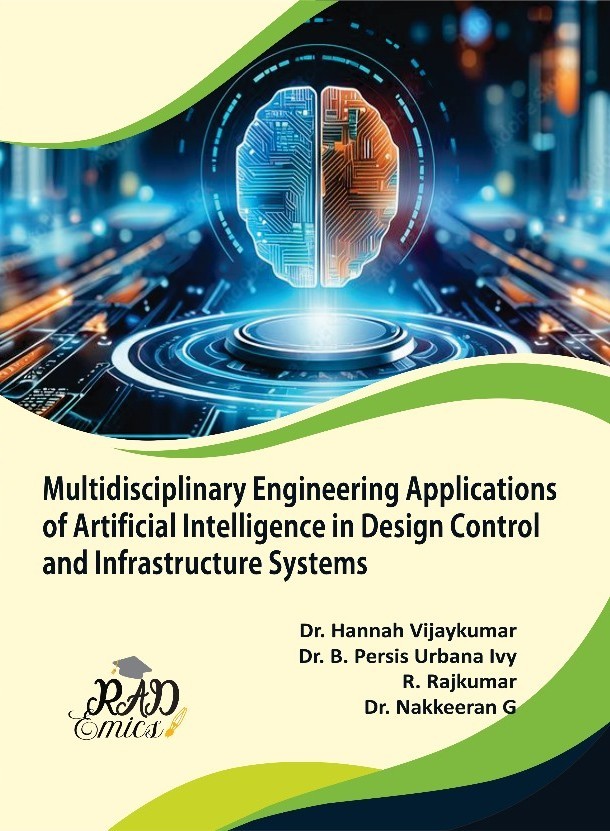
Peer Reviewed Chapter
Chapter Name : AI Powered Fault Detection and Grid Load Forecasting in Smart Power Distribution Networks
Author Name : C. M. Jadhao, Janani Kumar, Aayushee G. Kamble
Copyright: ©2025 | Pages: 35
DOI: 10.71443/9789349552609-03
Received: 20/03/2025 Accepted: 08/06/2025 Published: 06/09/2025
Abstract
The integration of Artificial Intelligence (AI) into Smart Power Distribution Networks (SPDNs) has transformed the way faults are detected and grid loads are forecasted. This chapter explores cutting-edge AI-powered techniques that enhance the reliability, efficiency, and sustainability of modern power grids, focusing on AI-driven fault detection and grid load forecasting in the context of smart grids. By leveraging machine learning, hybrid AI models, and optimization algorithms, this work addresses the challenges posed by the increasing complexity of grid systems, particularly with the integration of renewable energy sources such as solar and wind. The chapter emphasizes the importance of real-time data analysis and predictive maintenance in optimizing grid performance, reducing downtime, and ensuring uninterrupted energy supply. Furthermore, hybrid AI models are presented as a promising solution for real-time fault detection, predictive maintenance, and load forecasting, offering improvements in both accuracy and computational efficiency. The implications of AI-based fault diagnosis and multi-objective optimization for load forecasting are discussed, highlighting their potential to revolutionize grid management and energy distribution strategies. This work contributes to the ongoing efforts to develop self-healing, adaptive, and resilient power distribution systems capable of handling the dynamic challenges of modern energy landscapes.
Introduction
The rapid evolution of power distribution networks is being driven by advancements in technology, particularly the integration of Artificial Intelligence (AI) [1]. Traditional power grids, often limited by manual systems and reactive maintenance, are being transformed into smart power distribution networks (SPDNs) capable of real-time monitoring and proactive management [2]. These intelligent networks utilize AI-powered systems to optimize grid performance, enhance reliability, and ensure sustainable energy distribution [3]. One of the key areas where AI is making a profound impact is in fault detection and load forecasting, two critical aspects of smart grid operations [4]. AI’s ability to process vast amounts of data in real-time enables quick and accurate identification of faults, minimizing downtime and reducing operational costs. Additionally, AI-driven load forecasting provides more accurate predictions of energy demand, which is crucial for balancing supply and demand, especially in grids with high penetration of renewable energy sources [5].
Fault detection in traditional grids often relies on manual inspection, scheduled maintenance, and basic monitoring techniques, which can be slow and inefficient [6]. The integration of AI allows for continuous, real-time monitoring of grid conditions, enabling the detection of potential faults even before they manifest as major issues [7]. Machine learning models, specifically supervised learning algorithms, can be trained on historical data to identify patterns indicative of faults, such as abnormal voltage fluctuations or unusual current behavior [8]. These models can then provide early warning signals, enabling operators to take corrective action before a fault impacts the system [9]. The application of AI in fault detection also enhances the grid’s resilience by enabling automated fault localization and recovery, reducing the need for manual intervention and improving system reliability [10].
Grid load forecasting is another critical challenge in smart grids, particularly as the demand for electricity becomes more unpredictable with the integration of renewable energy sources like solar and wind [11]. These energy sources are inherently variable, making it difficult to predict their output and subsequently forecast the grid load with high accuracy [12]. Traditional forecasting methods, such as time-series analysis and statistical models, often fail to account for the complexities introduced by renewable energy fluctuations [13]. AI-based load forecasting methods, including deep learning and ensemble techniques, offer significant improvements. These models can analyze large datasets, including weather patterns, historical consumption data, and real-time sensor information, to generate highly accurate load forecasts [14]. By incorporating both short-term and long-term prediction capabilities, AI-driven load forecasting allows grid operators to better manage electricity distribution, reducing energy waste and ensuring a more reliable power supply [15].